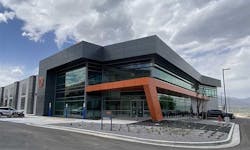Bare Metal + Colocation: The Best of All Worlds
Today, companies have a wide range of options when it comes to hosting vital infrastructure, including their data, applications, networks, and workloads. Each option must be carefully evaluated to make sure it delivers the best mix of performance, flexibility, cost, location, security, and other important variables.
For many companies, turning to bare metal in a colocation-focused data center can be the perfect solution for these demanding requirements. To be clear, there are no wrong choices since each hosting model offers several pros and cons to consider. On-premises, colocation, private cloud, public cloud, and full MSP-managed hosting models are all perfectly viable alternatives.
In some cases, bare metal offers a Goldilocks solution: It can be the “just right” choice that provides the best of all worlds when it comes to performance, flexibility, and cost-effectiveness.
Bare Metal: An Option Worth Considering
Bare metal servers are physical servers—not virtual—without an operating system or a virtualization layer. They are single-tenant machines dedicated entirely to just one customer and are not shared among many companies.
Why would companies consider bare metal servers, especially since they have the reputation among some organizations of being a decades-old architecture choice before cloud even existed? It’s a reasonable question given that so many other hosting models can clearly deliver real IT and business benefits. For example, colocation is a great choice for companies looking to keep costs low, maximize workload performance, and meet specific goals related to edge, disaster recovery, security, and more. In this scenario, companies may not want to consider other alternatives and stick with traditional colocation.
Yet, many companies may stand to achieve even more results and ROI when combining their investment in bare metal and colocation from a third-party data center provider with edge capabilities. For example, they may not want to purchase and procure new servers and other equipment that then need to be “racked and stacked” in the colocation facility. They might not want to then maintain this equipment on an ongoing basis, including paying annual maintenance costs from the equipment manufacturer.
There’s also another real issue: Today, the computer chip shortage and global supply chain disruptions have significantly slowed server-shipment times. Even if companies want to purchase and deploy new servers in colocation facilities themselves, they might not receive them for 9-12 months due to back orders and ongoing delays. Speed to market is critical for companies that require scalability. Delaying implementation by many months becomes an opportunity cost today’s enterprises simply can’t afford.
In contrast, cloud hosting could be an effective option. The cloud is proven to maximize resource utilization, automate provisioning and scaling, and offer an attractive OpEx model. Still, cloud hosting may not always be the perfect fit. For example, an enterprise’s existing virtualization and hypervisor may not be compatible with the cloud vendor’s systems, or they may not want another party managing their virtualization layer.
Cost can be a real concern too: Many companies engage with cloud vendors thinking they’ll only pay fractions of a penny for data egress fees, only to have surprisingly high costs due to application throughput, analytics workloads, or other infrastructure demands. (We addressed this issue in a recent Voices of the Industry article.)
Benefits of Bare Metal in the Colocation Data Center
Facing these specific requirements and technology/business objectives, many IT teams are turning to bare metal in a colocation facility to achieve many important benefits:
- Flexibility: Imagine the case of a CTO who wants to test a particular workload but may have a hard time justifying the cost of purchasing new servers or paying high cloud egress fees. In this case, the company can add as many bare metal machines as it needs in the colocation facility—without ever stepping foot into the data center—providing a fast, flexible, on-demand resource without the need to reside in another vendor’s environment.
- Control: Larger enterprises may have well-established systems and demanding requirements and do not want to fit into someone else’s hosting model. They prefer an industry-standard, closed environment that gives them the ability to develop, test, deploy, and support their workloads, without signing up for extra services they may not need.
- Cost: Bare metal servers give companies an extremely flexible billing option, one that is a welcome relief to the high egress fees associated with public cloud vendors. Instead of buying servers—a potentially expensive CapEx investment—companies rent server capacity on an ongoing, OpEx model to keep costs low and manageable.
- Orchestration: To borrow a line from the famous Oldsmobile commercial, this is not your father’s bare metal. Today, colocation data center operators offer an orchestration layer on top of the bare metal platform. This lets IT teams manage their bare metal servers and their workloads and use automation to resolve issues as they happen.
- Edge presence: Many companies look to increase their presence at the edge to minimize latency and better serve their customers. Increasingly, this means high volumes of data need to be sent to the edge of the network, which may not be possible with hyperscale cloud providers or could result in high egress fees. Colocation data centers are situated all across North America (and the world), giving companies an effective way to accomplish their edge vision and goals.
- Deployment time: Bare metal servers provide one other surprising benefit: speed to market. In this case, many colocation hosting providers will have proactively planned for scaling the infrastructure and have servers ready to go now, which is a significant advantage in getting started quickly.
No Bumps in the Road: Bare Metal in Autonomous Driving
Consider the example of an automotive manufacturer looking to expand the development of autonomous cars. Self-driving vehicles are the perfect edge use case because they need compute resources as close as possible to users in order to minimize latency and influence driving behavior in real time. 5G networks can deliver the low latency car manufacturers require at the edge. Conversely, many hyperscalers and cloud vendors only offer centralized hosting centers that are simply too far away to be an effective solution.
Bare metal servers in a colocation data center can be the perfect way to overcome this challenge. Colocation facilities and networks are already built and ready to go – when and where you need them. This organic evolution helps companies support geographic-specific strategies such as disaster recovery, security, and compliance—so car makers can pick the networks that work best, with the ability to select the right bare metal servers and orchestration layer, connect to 5G networks, and provide the compute resources and speeds their cars require.
Bare Metal: A Just Right Hosting Approach
While the concept of bare metal might seem to be an outdated approach to compute and infrastructure hosting, today bare metal in colocation facilities may be an ideal fit for companies looking to capitalize on the best elements of colocation and cloud hosting. With its ability to deliver fast deployments, reliable performance and scalability, edge solutions, and more, bare metal delivers a best-of-all worlds approach capable of delivering significant business value.
Jeremy Pease is DataBank’s Senior Vice President of Managed Service Operations. Scott Palsgrove is the Vice President of Sales for DataBank’s Northeast region. Contact DataBank to learn more about their hosting and services options.




